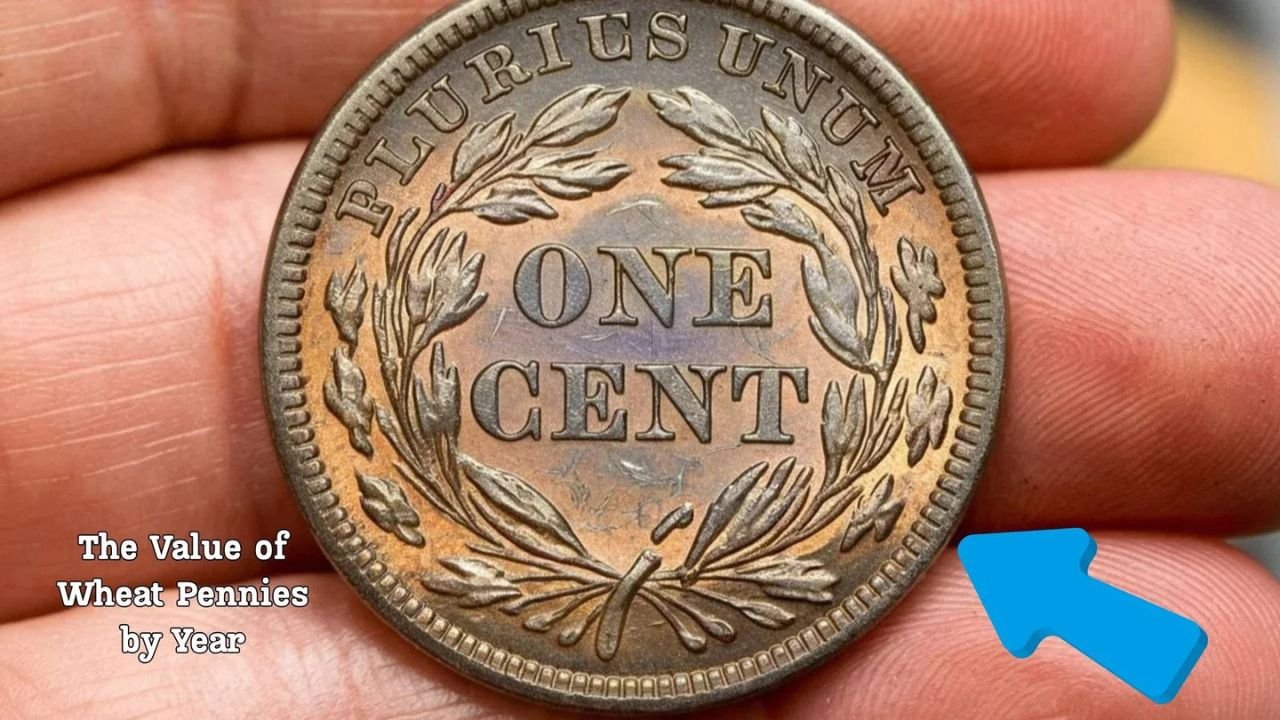The Value of Wheat Pennies by Year: Wheat pennies, also known as Lincoln Wheat cents, are small coins with big stories. These coins were produced in the United States from 1909 to 1958 and feature the image of President Abraham Lincoln on the front and two wheat stalks on the back. Collectors love them not only for their design but also for their historical value. But how much are they actually worth today? That depends on the year they were made, their condition, and a few other factors. Let’s break it all down year by year.
What Makes Wheat Pennies Special?
Wheat pennies are more than just old coins. They were the first U.S. pennies to feature a real person — Abraham Lincoln — which was a big change at the time. Before 1909, U.S. coins didn’t show real people. Also, their reverse side, with two wheat ears, gave them the name “Wheat pennies.” These coins are full of American history and are popular among both beginner and experienced collectors.
How the Year Affects the Value
The year a wheat penny was made plays a big role in its value. Some years had fewer coins minted, which makes those pennies more rare. The fewer there are, the more collectors want them, and the higher the value goes. For example, the 1909-S VDB penny is famous because only a small number were made, making it extremely valuable.
Understanding Mint Marks
If you look closely at a wheat penny, you may see a small letter under the date. This is called a mint mark. It shows where the coin was made. For example:
-
No letter means it was made in Philadelphia.
-
“D” means Denver.
-
“S” means San Francisco.
Some mint marks are much rarer than others, especially in certain years. A 1914-D penny, for example, is worth much more than a regular 1914 penny.
Condition Matters Too
Just like anything old, the condition of a wheat penny changes its value. A shiny, clean coin with all the details visible (called “uncirculated”) is worth more than a worn-out one. Coin experts grade coins from poor to perfect, and better grades mean better prices. So even two pennies from the same year can be worth very different amounts.
Rare Years That Stand Out
Some wheat penny years are much more valuable than others because they were made in smaller numbers or have special features. Here are a few of the most sought-after years:
-
1909-S VDB: This is the king of wheat pennies. It’s very rare and can be worth thousands.
-
1914-D: Also hard to find and highly valuable.
-
1922 (No D): A mistake caused some coins to be printed without a mint mark, which made them rare.
-
1943 Copper Penny: Most pennies this year were made from steel because of the war. But a few copper ones slipped through, and they’re extremely valuable.
Common Years Still Have Value
Even if your wheat penny isn’t from a rare year, don’t worry. Many common years still have value, especially if the coin is in good shape. Pennies from the 1940s and 1950s may be worth a few cents or dollars each — not bad for a coin that once bought a piece of candy!
Table: Average Value of Wheat Pennies by Year
Here’s a simple table showing estimated values of wheat pennies by year. These prices are for average circulated coins. Uncirculated or rare versions can be worth much more.
| Year | Average Value (Circulated) |
|---|---|
| 1909-S VDB | $600 – $1,500+ |
| 1914-D | $200 – $400+ |
| 1922 (No D) | $300 – $600+ |
| 1931-S | $60 – $100 |
| 1943 Copper | $75,000+ |
| 1944 Steel | $50,000+ |
| 1940–1958 | $0.10 – $1.00 |
Why Collectors Love Wheat Pennies
Collectors enjoy wheat pennies because they’re a fun way to hold a piece of history. Each coin tells a story, from the Great Depression to World War II. They’re also easy to find — you might still get one in your change today, and many people find them in old jars or drawers. Plus, starting a collection doesn’t cost much, and you never know when you’ll find a rare one.
Can You Still Find Wheat Pennies Today?
Yes, it’s possible! While most wheat pennies have been taken out of circulation, they still turn up now and then in pocket change or coin rolls from the bank. Many people also find them in old coin collections, family keepsakes, or at garage sales. So keep an eye out — treasure could be hiding in plain sight.
Final Thoughts on Wheat Penny Value
Wheat pennies may be small, but they hold big value — both in money and history. Whether you’re a collector or just curious, checking the year and condition of a penny can be a fun and rewarding experience. Even if your coin isn’t worth a fortune, it’s still a piece of the past that you can hold in your hand.
FAQs About Wheat Penny Values
Q: What is the most valuable wheat penny?
A: The 1943 copper penny and the 1909-S VDB penny are among the most valuable.
Q: How can I tell if my wheat penny is valuable?
A: Check the year, mint mark, and condition. Rare dates and well-kept coins are usually worth more.
Q: Are all wheat pennies worth money?
A: Most are worth more than face value, especially if they’re from before 1940, but many are only worth a few cents unless rare or in great condition.
Q: Can I sell my wheat pennies?
A: Yes! You can sell them to coin shops, online, or at auctions if they’re valuable.




